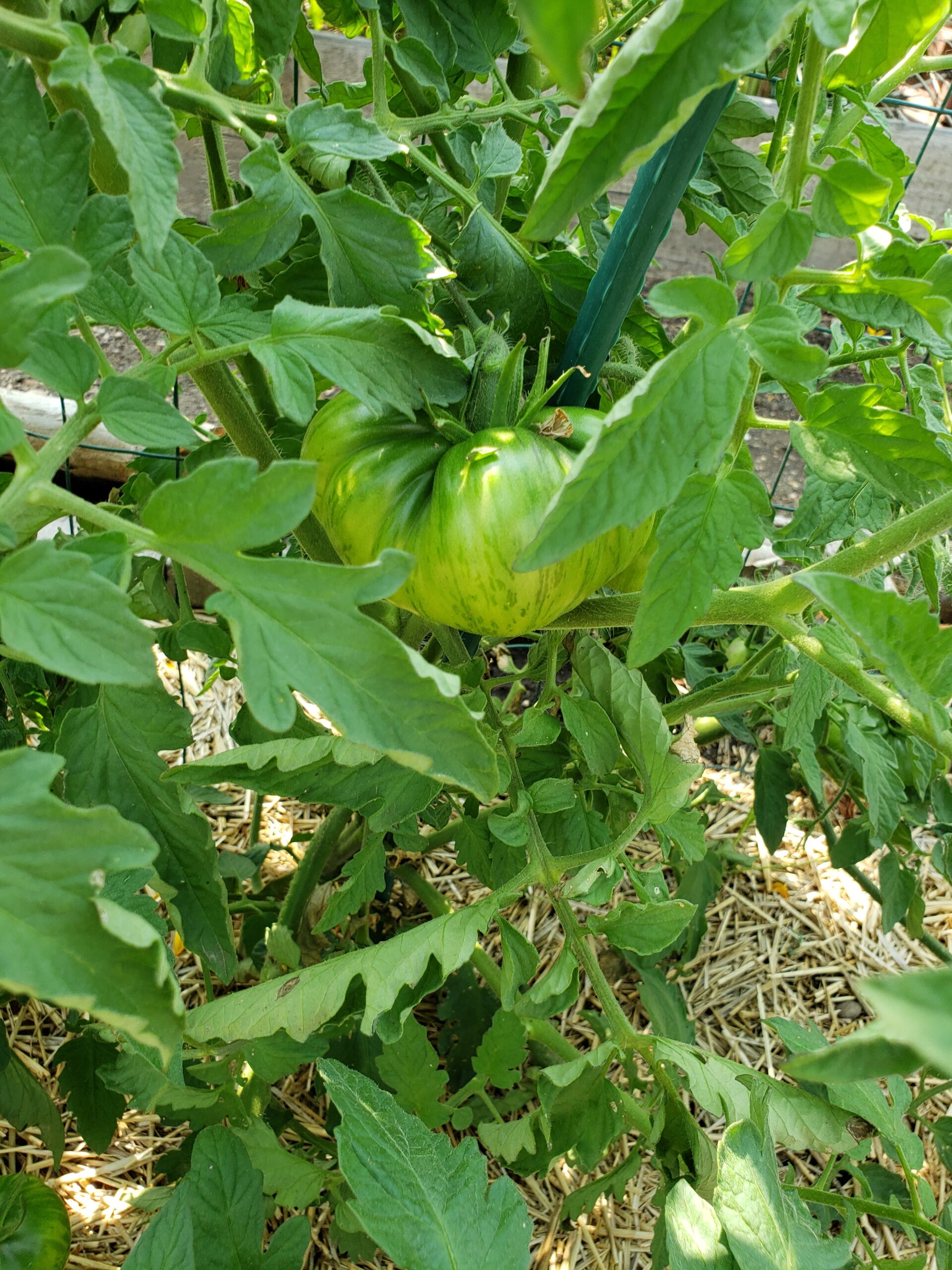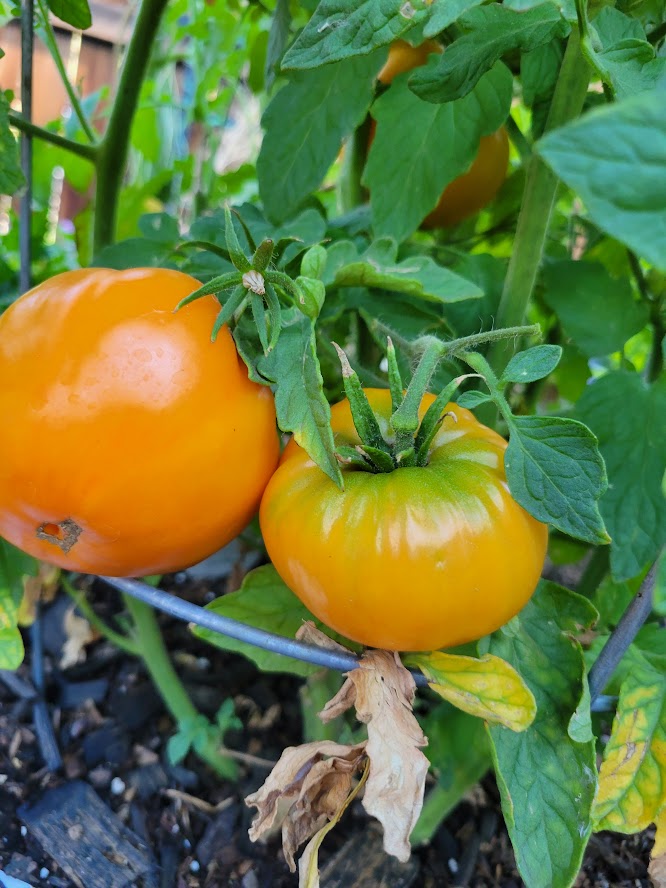Tomatoes are one of the most popular garden vegetables. Many different tomato types, varieties and shapes are available for gardening.



How should I start a tomato plant?
Tomatoes do best if started indoors from seed six to eight weeks before planting. For an early crop, plant tomatoes as soon as the danger of frost is past. Popular varieties of tomatoes are available at nurseries and garden centers as bedding plants, or transplants. The four consistently performing tomato varieties for this area are Big Beef, Celebrity, Early Girl and Medina. When buying transplants, remember that, for healthy plants, the condition of the plant is more important than the variety.
What soil works best for tomatoes?
Tomatoes perform best in a warm, rich, deep garden soil and have an extensive root system. Add a one-inch layer of organic material to the tomato-bed soil and mix it in deeply. Fertilize the area before planting tomatoes. Warm the soil using black fabric mulch, or plant tomatoes on the south side of buildings that are warmed by the sun.
How can I protect my tomato plant from freezing?
If there’s a possibility of frost, protect the plants with hot caps, plastic covers, boxes or baskets. Remember to remove this protection each morning to vent the plants and prevent over-heating.
How can I prevent a poor crop?
A poor crop can be caused by night temperatures below 50 degrees Fahrenheit when pollen isn’t produced in sufficient quantities. Once tomatoes form, avoid fluctuations in soil moisture to prevent blossom end rot, a disorder related to watering and the movement of nutrients into the plant.
How can I speed up the ripening of my tomatoes?
To hurry the ripening of tomatoes, withhold water a bit, but avoid prolonged wilting of the plant. When frost threatens in autumn, cover plants or cut them off at ground level and hang them upside down indoors so tomatoes continue to ripen on the vine.
For “Organic soil amendments” refer to message number 1604.
For more information, see the following Planttalk Colorado™ video(s).
For more information, see the following Colorado State University Extension fact sheet(s).
- Recognizing Tomato Problems
- Drip Irrigation for Home gardens
- Microirrigation for Orchard and Row Crops
- Potato or Tomato Psyllids
- Greenhouse Whitefly
- Flea Beetles
- Vegetable garden: Soil Management and Fertilization
- Choosing a Soil Amendment
- Vegetable Planting Guide
- Vegetable Garden Hints
- Block Style Layout in Raised Bed
- Cucumbers, Pumpkins, Squash, and Melons



